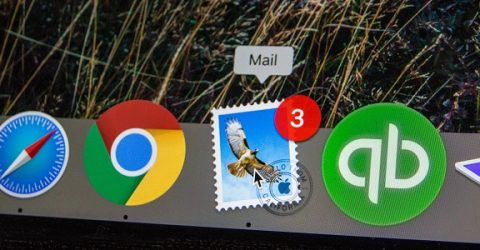How does IMAP email work?

When we receive an email, we rarely consider the mechanics which underpinned its delivery.
Email is something we take for granted nowadays, along with streaming video content and high-speed mobile connectivity.
Yet email distribution isn’t a simple process.
And that’s especially true in the age of multi-platform logins, where you could draft an email on a works PC, edit it on your smartphone on the train, and send it from your iPad at home.
How do otherwise unconnected devices know about the most recent modifications to an email? And what technology makes this possible?
Step forward Internet Message Access Protocol, better known as IMAP.
Snap, crackle and POP
Back in the days when internet data was transmitted down crackly phone lines, email services operated under the Post Office Protocol.
Developed in 1984, its name derived from the principle of a single copy of each email being delivered to its destination and immediately being erased from the sending server.
What happened to that email depended on the choices made by the recipient device’s owner/user/administrator, akin to a letter being delivered.
Save it, copy it, delete it…the choice is yours.
This was fine in an age when desktop computers were the only conduit to the internet, but it lacked flexibility as mobile devices like BlackBerries capitalised on new 3G cellular services.
Even relatively advanced POP servers, which permitted logins from multiple devices, didn’t store or recognise changes to mail on specific devices.
You could read and delete a message in one email program, yet see the same message marked as unread when you checked your inbox on another device.
Such inefficiencies encouraged providers and end users alike to adopt the rival IMAP email protocol, which involves two-way communications between server and recipient.
Rather than a message being delivered to one device and erased from the server, it remains on the server with users viewing and editing message data in situ.
When you perform an action on a specific message, this information is relayed to the host server, which updates its records accordingly.
Every device you can access your emails from will therefore show that message as having been read, deleted, moved or replied to.
Flexible friend
When a device is asked to establish an email connection, it connects to a mail server through a dedicated port.
This is usually port 993 for secure connections, as stipulated in a global standards protocol first published in 2003.
The client device will check for new messages and retrieve undelivered ones, sending and receiving messages in real time and remaining connected until the client application is closed.
Users can reopen the application in any time, log in from an additional device simultaneously, and make changes which are instantly mirrored across the board.
IMAP email distribution offers a number of key benefits, which have made it the protocol of choice for modern email services and ISPs.
Firstly, the MIME format of modern emails enables users to download a message’s header and preview it without having to download its full content.
That’s beneficial on devices with limited connectivity, and it also prevents potentially harmful attachments being downloaded and opened.
IMAP email can be archived on a local device while remaining backed up on remote servers, providing a duplicate copy if anything happens to the device.
IMAP messages may be stored in sub-folders. Email services like Google’s Gmail even supply pre-chosen folders – Social, Promotions, etc.
And finally, IMAP supports flagging (highlighting specific messages for future reference) and folder searches for words, attributes or sender names.






